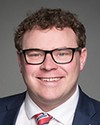The Sioux Lookout First Nations Health Authority is a non-profit organization based in Sioux Lookout.
We provide what I call “non-medical services” to the 32 communities in northwestern Ontario. Of these communities, 28 are remote. They are accessible only by air and by winter roads in winter. They start using winter roads in early January, and they're just finishing with them now, because the weather is getting too warm.
The services we provide are primary care, mental health care, special needs care, public health care and client services. By “client services”, I mean transportation and accommodation services for patients and clients who come to Sioux Lookout for services. Janet will be explaining those services in more detail. We also provide management and administration services for all physician services within the whole region.
One of the things I want to impress upon you is that all of those communities I just spoke about are scattered in an area about the size of France, in northern Ontario. The population is approximately 30,000, divided among all those communities.
Keep in mind that none of those communities have hospitals, pharmacies or children's mental health centres. All they have are nursing stations, clinics that are staffed by outside professionals. Nurses and doctors will come in.
The nurses are there year round, although I think that about 60% of all the nurses who operate in our area are agency nurses who will come in for two weeks at a time and work there. I don't know if Janet has any details on it, but it's a very expensive way of doing business.
One of the things we're going to be talking to you about is training health workers, who will be trained to focus more on the things the people really need—although the people who go in there two weeks at a time, the nurses and the doctors, can still continue to perform their professional services.
We need to find cheaper and more consistent ways of providing health care services to the people who live in the communities.
One of the things that happened in 2006 was that the chiefs from our area approved what we call the Anishinabe health plan, which is a district health plan. If any of you want copies of it, we can make that health plan available to you. That's basically what we have been following since then. It sets out a comprehensive integrated primary health care model and implementation plan. We've been slowly working on implementing that plan.
I'm glad we are here to talk about capacity-building. It is one of our greatest needs. The Canadian education system, if I might call it that, is just not fast enough for us. It's not producing trained personnel from our area who would stay in our area with this work. It's a very slow process. I was just thinking this morning that, if we were to look at the past 50 years of what that system has done to produce health care professionals, we're going to be waiting a long time to produce trained care workers from our area in sufficient numbers to really have a positive effect on the health of our people up north. I'm hoping you can look at those numbers in more detail in the work you're doing now.
I'm going to turn it over now to Janet, to talk to you in more detail about some of the things we have throughout our area.
Meegwetch.




